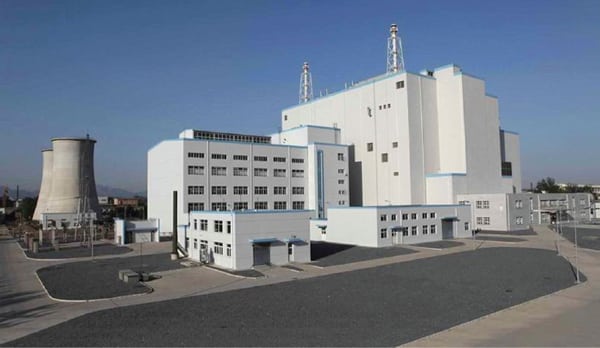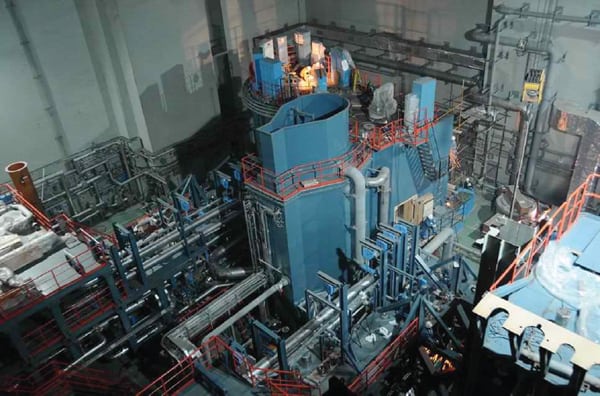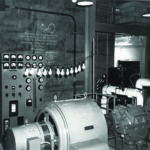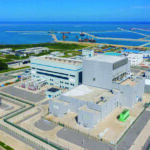China in July flicked on its experimental fast reactor—the first built in the nation, and the first of many more to come. The China Experimental Fast Reactor (CEFR), whose development began in 1995, is a pool-type sodium-cooled reactor with a thermal output of 65 MW and an electrical output of 20 MW. The reactor is housed in a 44,000-square-meter (473,610-square-foot) building.
Its operation marks a major milestone for the key project of the National High Technology Research and Development Program of China that was initiated in March 1986 (which is why it is also called the 863 program) and intended to stimulate the development of advanced technologies to make China independent of financial obligations for foreign technologies.
The CEFR was built by Russia’s OKBM Afrikantov in collaboration with OKB Gidropress, NIKIET and Kurchatov Institute, near Beijing (Figure 1). According to the China Institute of Atomic Energy (CIAE), a state-run research institute that owns the project, the CEFR uses a fast-neutron spectrum and offers the benefit of enhancing the use of uranium resources through breeding fuel and closing the fuel cycle (Figure 2). (For more on fast reactors, see “PRISM: A Promising Near-Term Reactor Option” in our August 2011 issue or the archives at https://www.powermag.com.)
 |
| 1. Proactive reactor. China in July officially began operating, at 40% power, an experimental 60-MWt, 20-MWe fast-neutron reactor near Beijing. The reactor achieved first criticality in July 2010. Courtesy: China Institute of Atomic Energy |
 |
| 2. Small but significant. Core height for the China Experimental Fast Reactor is 45 centimeters. It has 150 kilograms of plutonium (98 kg of which is Pu-239). This image shows the inside of the reactor hall. Courtesy: China Institute of Atomic Energy |
“Reactor core pool type structure and Sodium-Sodium-Water circuit heat removal system is applied for the first furnace, and [uranium oxide, UO2] is adopted for initial fuel,” the agency says on its website. “And the fast reactor system can transmute the long life fission products and consume transuranics with a closed fuel cycle, thus reducing the radiotoxicity and heat load which facilitates waste disposal and geologic isolation. To sum up, the fast reactor system can solve the problems of sustainable development in our country, and this system is also the main choice of Gen-IV in the world.”
The project is the first of a string planned by China—a country that has 25 nuclear reactors under construction and expects to increase its nuclear capacity from the current 11.2 GW to 80 GW by 2020. CIAE projections show fast reactors progressively increasing to account for at least 200 GWe by 2050 and 1,400 GWe by 2100. According to the World Nuclear Association (WNA), a 1,000-MWe Chinese prototype fast reactor based on the CEFR is under development, with construction planned for 2017. The so-called China Demonstration Fast Reactor (CDFR) will be a three-loop 2,500-MWt pool-type, will use mixed-oxide fuel with 66 gigawatt-days per metric ton burn-up, run at 544C (1,011F), have a breeding ratio of 1.2, with 316 core fuel assemblies and 255 blanket ones, and have a 40-year life.
The WNA notes, however, that China in 2009 signed a significant agreement with Russia’s Atomstroyexport for development of a commercial nuclear power plant with two BN-800 reactors. Construction of the reactors is expected to start in 2013, and startup is anticipated in 2018–2019. Russia’s BN-800 fast reactor is being built at the Beloyarsk Nuclear Power Plant and will begin producing electricity in 2014. Rosatom claims that the reactor will be ready for operations as early as next year.
At the same time, as reported earlier this year by China Business News, the nation is proceeding with plans to build its first high-temperature gas-cooled reactor at Rongcheng in Shandong province. That plant will use helium in its cooling system, and reactor cores will be able to withstand temperatures of more than 1,600C (2,912 F).
A renewed interest in nuclear energy—despite the ongoing crisis at Fukushima—makes fast reactor deployment likely to be accelerated, according to the International Atomic Energy Agency. One reason is that nations reliant on nuclear power are focusing on sustainability, which requires renewed attention to how spent fuel can be better reused. Fast reactor technology is necessary to achieve this, the agency says.
To date, about 20 fast-neutron reactors are operating in several countries—the U.S., Russia, France, the UK, Germany, India, Japan, and Kazakhstan—some since the 1950s, and some supplying electricity commercially.
Fundamental research continues in many of these countries. India will next year start operating its 500-MWe prototype fast breeder reactor (FBR) at Kalpakkam, Tamil Nadu, using mixed oxide fuel with reactor-grade plutonium being produced from existing domestically built pressurized heavy water reactors (PHWRs) via a Purex reprocessing. PHWR reactors using unenriched uranium would operate at 0.3% fuel utilization, compared with 75% utilization expected for the PFBR.
Japan last year restarted its 280-MWe demonstration FBR at Tsuruga after a sodium leakage in its secondary heat transfer system during performance tests in 1995 caused it to be shut down for almost 15 years. France, meanwhile, is developing two types of fast-neutron reactors (essentially Generation IV designs): the sodium-cooled Astrid (Advanced Sodium Technological Reactor for Industrial Demonstration), a 250-MWe to 600-MWe prototype likely to be deployed by 2050; and the Allegro, a gas-cooled experimental fast reactor, which could be under construction as soon as 2025.
—Sonal Patel is POWER’s senior writer.









